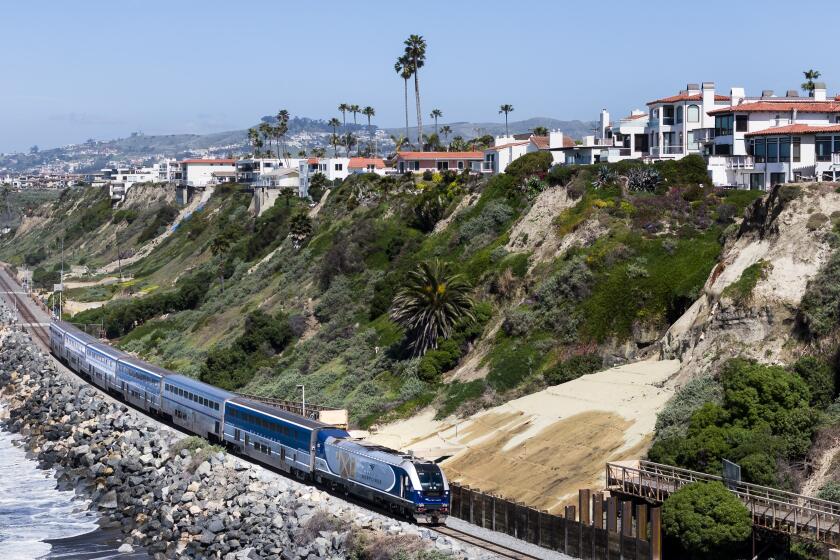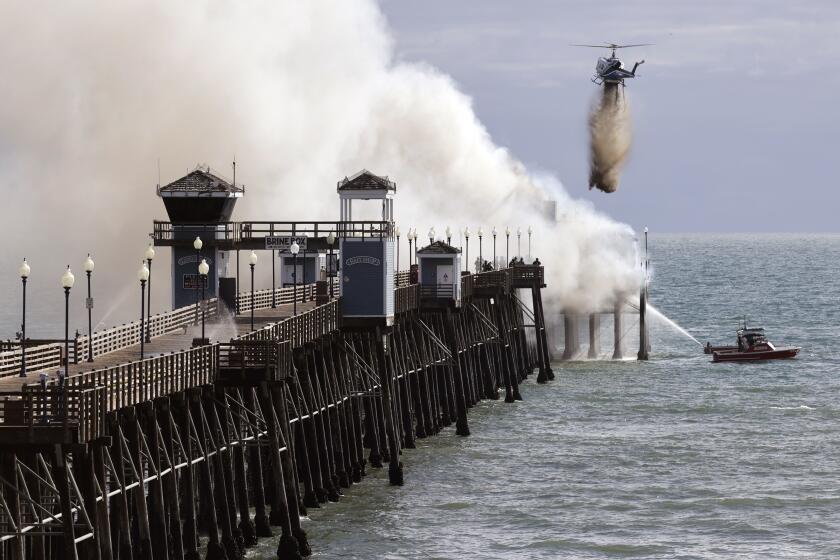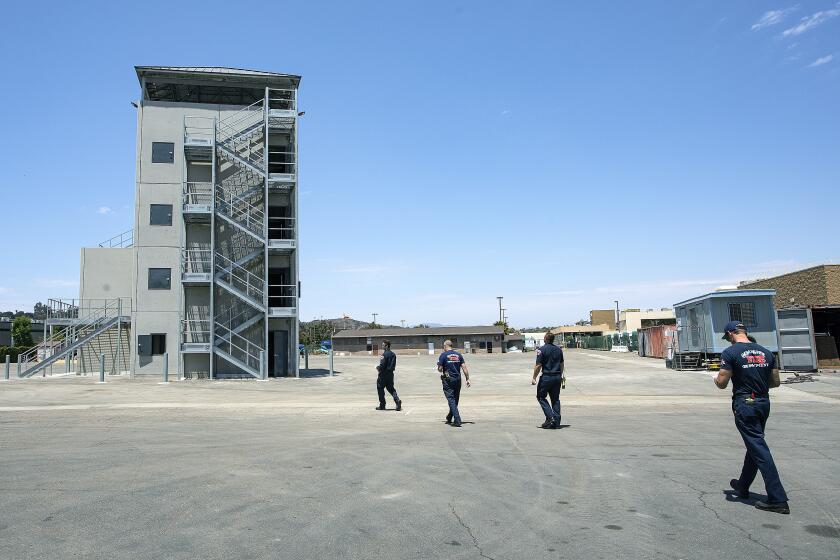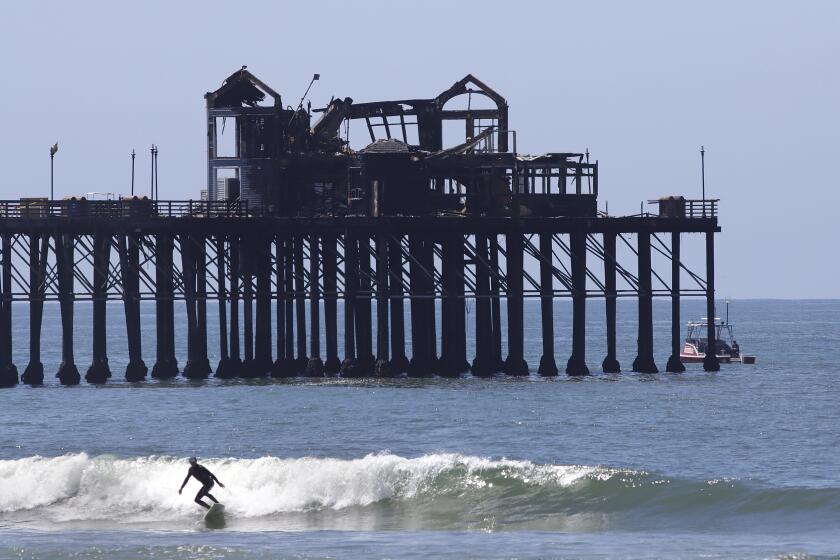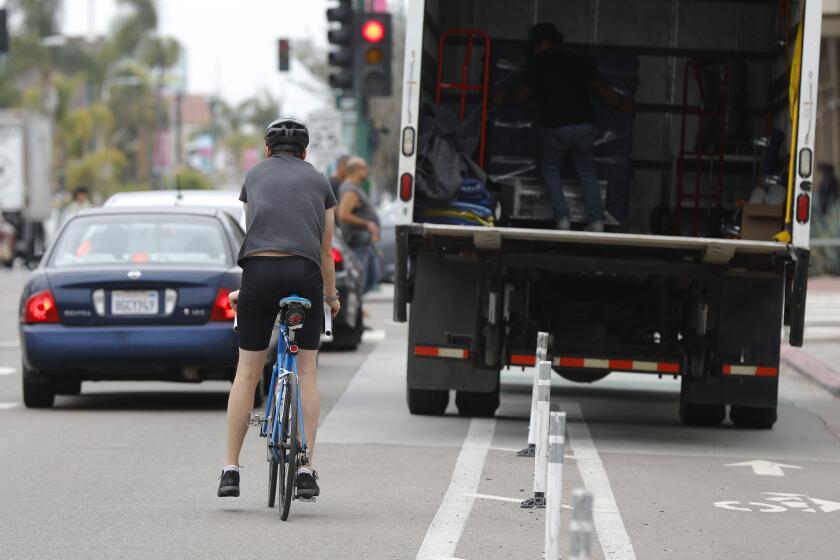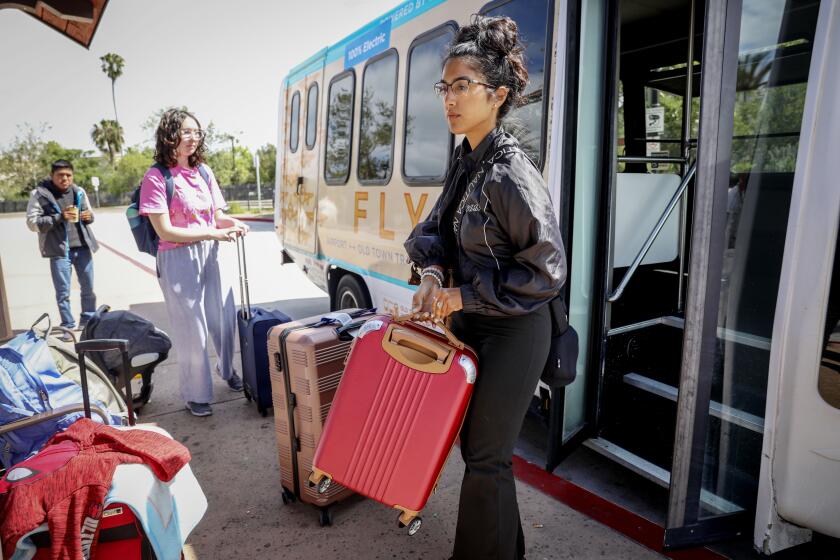Passenger train service remains offline as land continues to slide at San Clemente trouble spot
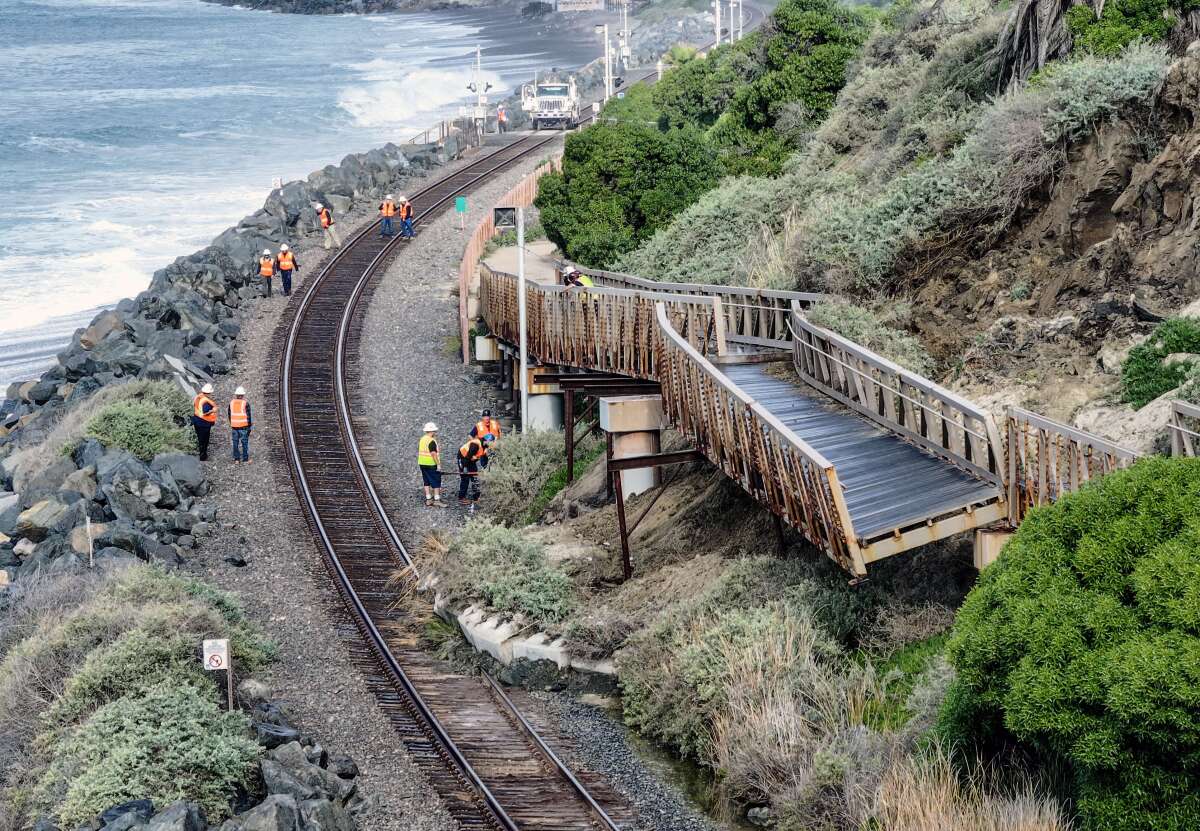
Hillside is being prepared for potential storm later this week
Soil continues to move at the site of the San Clemente landslide that has halted passenger train travel between San Diego and Orange counties since last week, rail officials said Monday.
“The construction and project teams, including geological technicians, resumed grading and excavating efforts (Monday) morning at 6:30 a.m. in an effort to stabilize the hillside slope,” said Scott Johnson, director of communications for Metrolink, the multi-county commuter rail service.
“At this point, there is still no definitive timeline as to when train movement can safely resume through the area,” Johnson said.
The spot at the Mariposa Pedestrian Bridge is the third separate location in San Clemente where landslides have halted train traffic on multiple occasions over the last several years.
Three BNSF freight trains were allowed through the Mariposa site at slow speeds Saturday night after the company’s representatives inspected the tracks, Johnson said. No trains were allowed on Sunday.
Freight trains have a window of time overnight when they can pass the site, Johnson said. During the daytime, when passenger trains usually travel, equipment, supplies and crews working to repair the site are crowded along the narrow stretch of tracks, and there is no room for trains to pass.
“Freight service resumed Saturday,” said Brianne Page, communications officer for the Port of San Diego.
“There was no impact at our Tenth Avenue Marine Terminal as there was no rail activity while freight service was suspended Wednesday-Friday,” Page said Monday afternoon. “There was minimal impact at the National City Marine Terminal.”
Work crews have completed most of the hillside grading and have installed plastic tarps to prepare for rain expected Thursday and through the weekend, Johnson said.
The bridge is on a city trail that runs parallel to the tracks on the uphill, landward side. It connects two sections of San Clemente beach along a steep bluff that is impassible for pedestrians during high tides. The slide occurred on private property above the trail, sending down material that damaged sections of the bridge and sent debris onto the tracks.
San Clemente city officials noticed movement in the hillside earlier and closed the pedestrian trail more than a week before material fell onto the tracks and stopped trains Jan. 24.
Metrolink provides passenger service in six Southern California counties and is responsible for maintaining the track in San Clemente. Metrolink trains normally go as far south as Oceanside, but as of Monday were only going as far as the Laguna Niguel-Mission Viejo station in Orange County.
Amtrak has suspended some of its Pacific Surfliner trains because of the closure. Some still run between San Diego and Oceanside, and north from Irvine, with a bus connection available by reservation between Oceanside and Irvine.
North County Transit District’s Coaster and Sprinter trains are not affected by the closure.
The San Diego to San Clemente route covers a little more than 60 miles of the 351-mile Los Angeles-San Diego-San Luis Obispo route known as the LOSSAN corridor.
Much of the LOSSAN corridor takes trains close to the coastline, which in places provides spectacular ocean views. However, the most scenic sections of the track are among the most threatened because of their proximity to the erosion caused by high tides, ocean waves and storm-water runoff.
Del Mar, near San Diego, is another spot where crumbling cliffs have long threatened the tracks and occasionally stopped trains.
The San Diego Association of Goverments has completed four phases of bluff stabilization projects at Del Mar since 2003, with a fifth phase with a $78 million budget expected to start this year.
“No issues were observed (at Del Mar) from last week’s storm,” said NCTD Director of Marketing and Communications Colleen Windsor.
“We had staff on-hand during the storm to address any issues,” she said. “We inspected the right-of-way and conducted track inspections following the storm. No concerns were identified.”
Transit district officials inspect drainage facilities in high-priority areas before storms, monitor the areas constantly during rain, and perform post-storm inspections, she said.
Past stabilization work on the Del Mar bluffs included the installation of hundred of concrete-and-steel pilings, seawalls, retaining walls, drainage structures and more.
SANDAG also received $300 million in state funding in 2022 to advance planning for the construction of a new route that would take about 1.7 miles of track off the Del Mar bluffs and into a tunnel drilled beneath the city of Del Mar.
Completion of the Del Mar tunnel would cost more than $4 billion and could happen no earlier than 2035, SANDAG officials have said.
Get Essential San Diego, weekday mornings
Get top headlines from the Union-Tribune in your inbox weekday mornings, including top news, local, sports, business, entertainment and opinion.
You may occasionally receive promotional content from the San Diego Union-Tribune.

